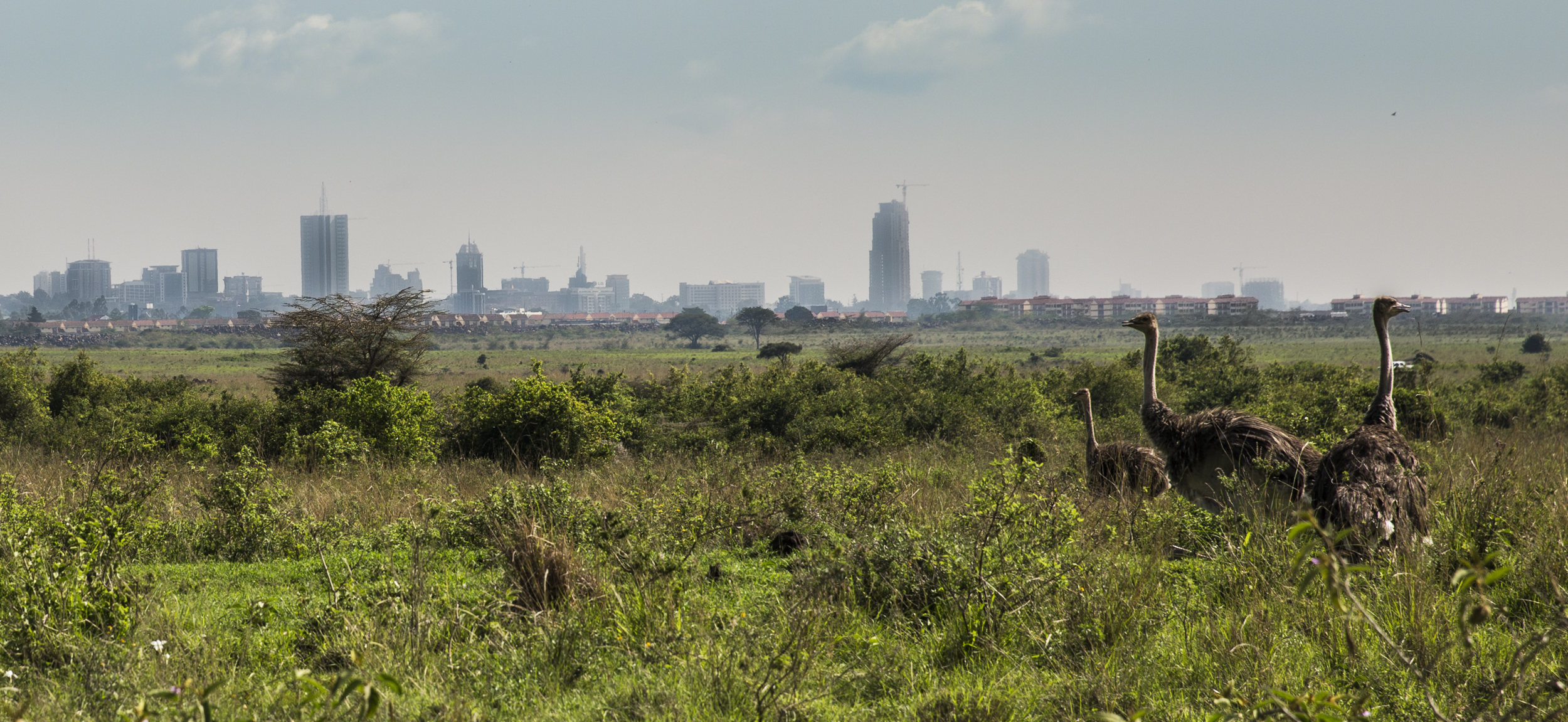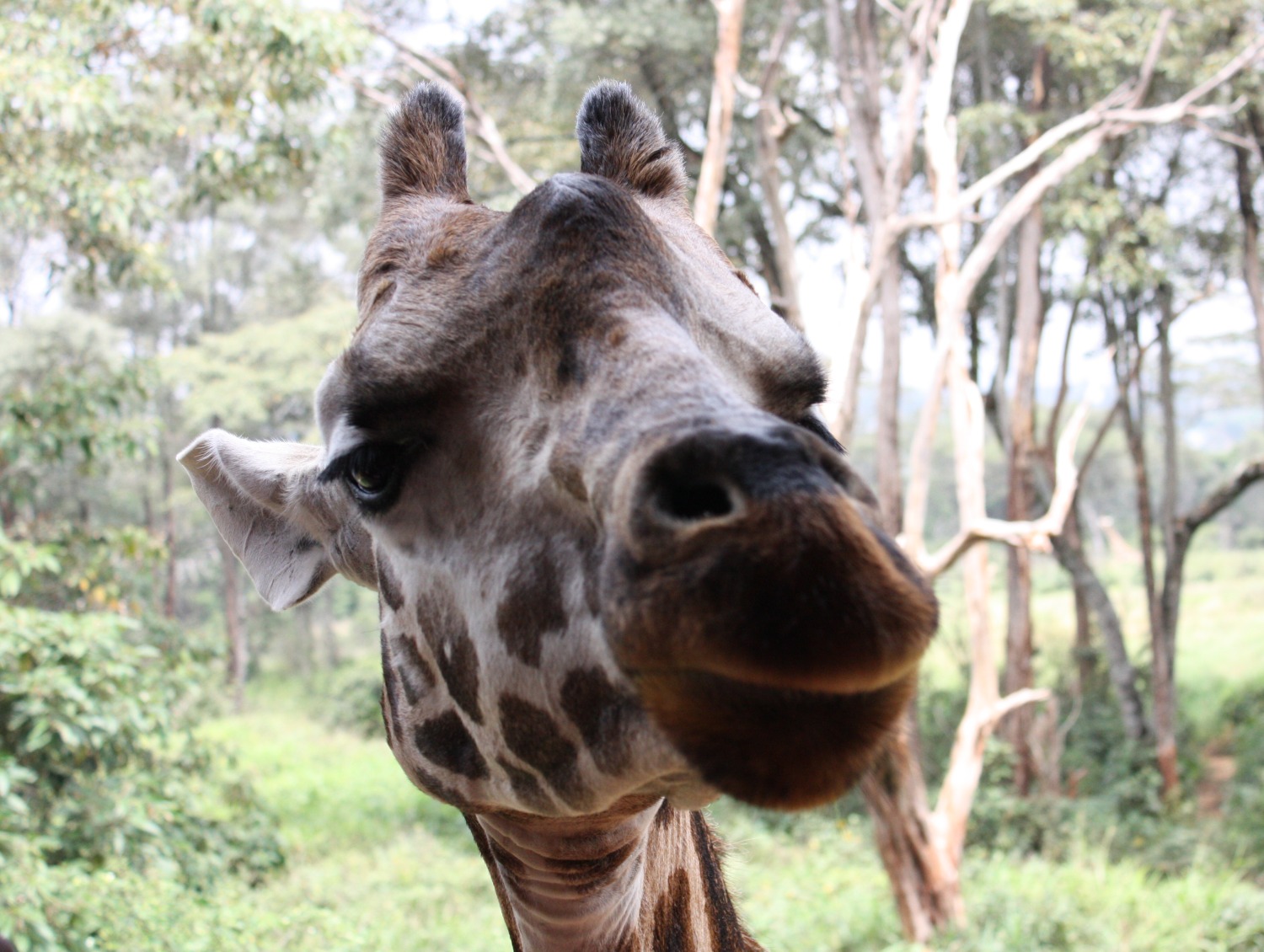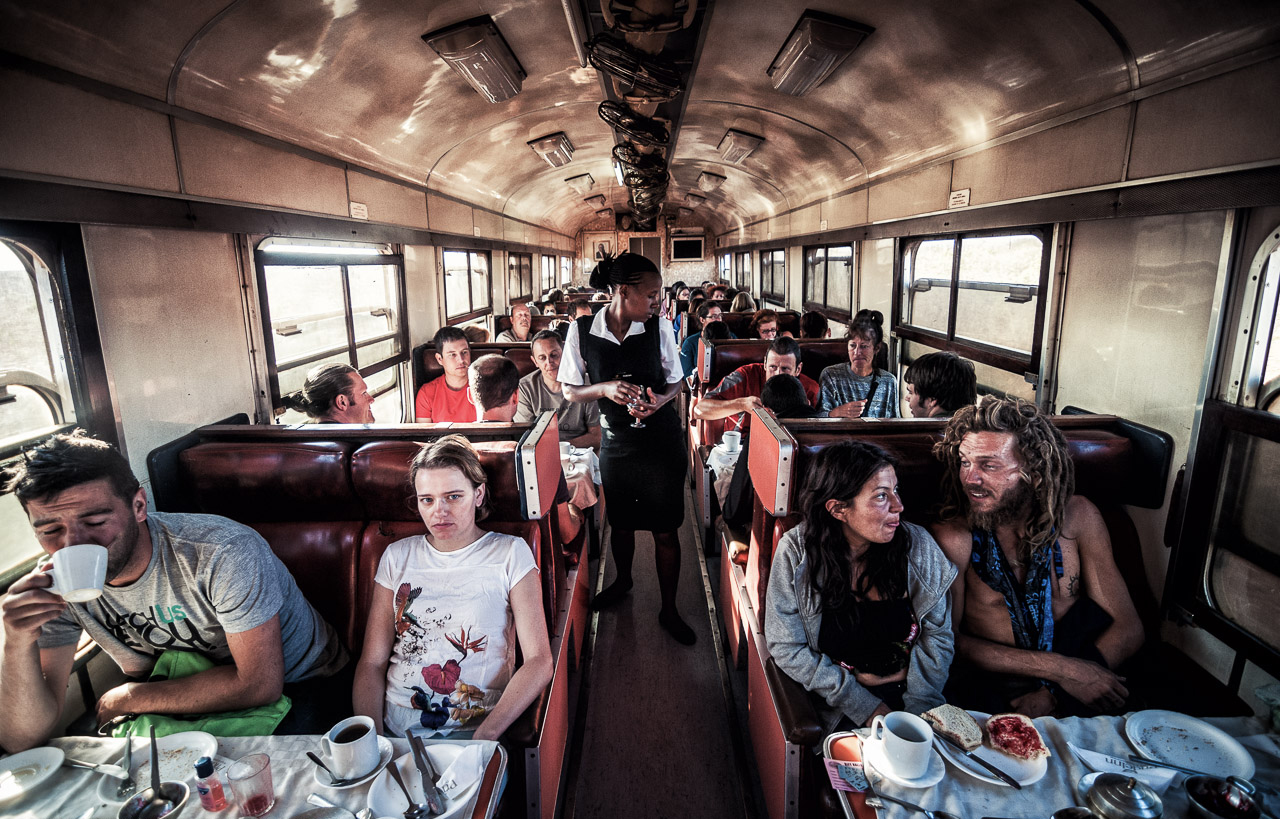Nairobi: Kenya’s Green City in the sun
Peter Mbulu wakes before dawn. Cup of tea in hand he opens the baby elephant’s pen and leads them from the David Sheldrick Wildlife Trust to the Nairobi National Park. He spends the entire day with the calves, orphans who have lost their families to poachers, trying to keep them connected to the wild.
One day, hopefully, he will say goodbye to his charges. But for now he is an important weapon in Kenya’s fight against poachers.
When you find yourself in Nairobi, a visit to the Trust, which raises orphaned young black rhinos and elephants, is a must. If you’re there around noon, you get to enjoy the sight of playful elephant calves taking a mud bath.

Orphan elephant calves at play in the David Sheldrick Wildlife Trust outside Nairobi. (Image: SarahTz, CC BY 2.0, via Flickr)
In the beginning the Nairobi stream of cold water in the local Masai tongue was a hub for the railway line connecting inland Uganda to the port of Mombasa on Kenya’s east coast. It was nothing more than a labour camp for Indian railway workers, under the eye of British colonists. From these beginnings a city grew. Today Nairobi is a centre for business in Africa, a city where new buildings constantly alter the skyline and where traffic has become a nightmare.
Fortunately there is the Nairobi National Park, a thriving savannah ecosystem only seven kilometres from downtown Nairobi. Watch wildebeest and zebra migrations, antelope herds and prowling lions etched against the Nairobi skyline.

Ostriches in Nairobi National Park, with the city’s skyline in the distance. (Image: Ninara, CC BY 2.0, via Flickr)
Less than a kilometre from the banks of the river that borders the park, the lights of Nairobi’s suburbia twinkle. In one of those suburbs, Langata, you will find the Langata Giraffe Centre. This hands-on environmental centre raising endangered Rothschild giraffes is a favourite with Nairobians and tourists alike. Visitors get to rub noses with these gentle, ungainly giants.

Getting face-to-face with a Rothschild giraffe at Nairobi’s Langata Giraffe Centre. (Image: Marc, CC BY-NC-ND 2.0, via Flickr)
Should you tire of the wildlife visit the Nairobi Railway Museum, heaven for rail enthusiasts. Climb through antique locomotives, photograph equipment or just wander through the garden filled with African railways history.
One of the world’s celebrated overnight train rides starts in Nairobi, with a terminus in Mombasa. In its glory days the train was all colonial grandeur of cocktails, fine dining and luxury. Riding the Rift Valley Railway you follow Karen Blixen’s journey to her coffee plantation, as portrayed in the Robert Redford and Meryl Streep romance Out of Africa. Today the train is a little more down at the heel, but the (scheduled) 15-hour ride is still worth the ticket price.

Breakfast on board Kenya’s Rift Valley Railway from Nairobi to the coastal city of Mombasa. (Image: Micha‚ Huniewicz, CC BY 2.0, via m1key.me)
The train creaks and is often late, so take a book or strike up a conversation with your fellow travellers. The real attraction is the scenery. The train runs through a few national parks and a variety of ecosystems. You ride through the Kenya’s Highlands with its volcanic red sands and across plains teeming with zebra, elephant, baboons and giraffe.
Nairobi – Kenya on the whole – requires time. In its equatorial heat the country runs at its own pace. The sociable chaos opens doors to meeting and getting to know Kenya. The people are friendly and warm, as is the heart of this city by the park.



